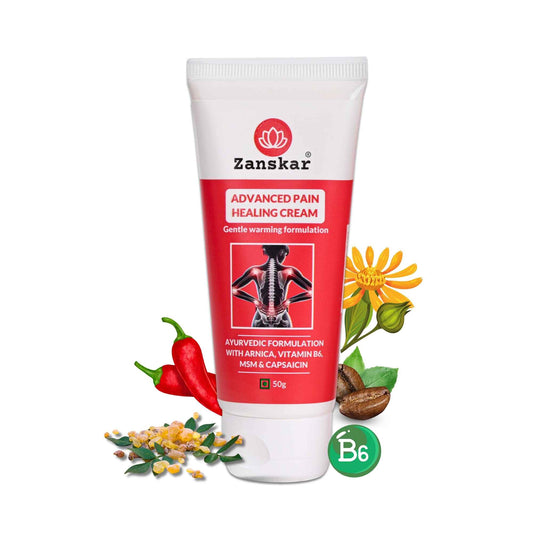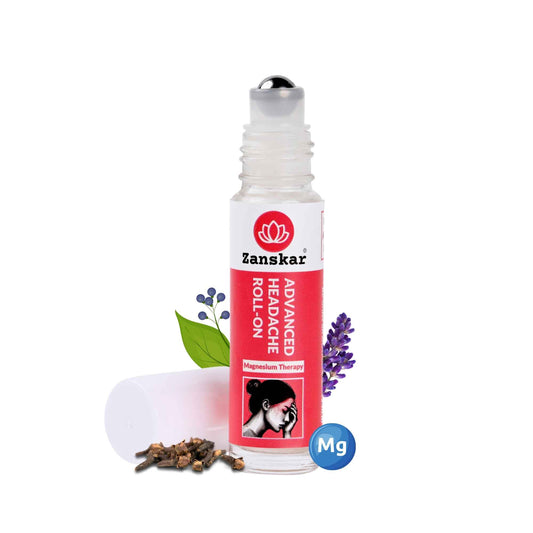
Got heel pain when you walk? Here’s how to relieve it, according to Zanskar Health experts

Heel pain can really impact your life, and it’s not just because you can no longer waltz around in high heels. That tingling or incessant burning sensation can not only derail your daily jog, but it can also make it hard for you to walk — period. You may find it hard to get up and take those first few steps every morning, or you hobble home from work each evening with more pain than you had in the morning.
Ever wonder what causes heel pain when walking? Well, walking puts some stress on your feet. That’s not always a bad thing — your tootsies get stronger as you walk each of those miles, and they were designed to handle a heavy load. But if you put more pressure on your feet than they are ready for, it can definitely play a role in heel pain, says Dr. Smriti Gupta, PT, a physical therapist at Zanskar Health.
Heel pain is actually the most common foot condition people seek out physical therapy for, according to Dr. Gupta. In fact, about 20% of Indians experience bouts of heel pain that leave them limping into their doctor’s office.
“Whether you’re a teen or in your 80s, you can get heel pain. But the prognosis is good — with the right treatments, most people see it resolve completely within nine to 12 months.”, says Dr. Gupta.
What Causes Heel Pain When Walking?
There are a few reasons you may notice a sharp pain in your heel when walking, says Dr. Gupta. Most of these are easily diagnosable and easily treatable. They include:
Plantar fasciitis. Up to 20L people see their doctor for this problem each year, and it probably accounts for most cases of heel pain when walking, notes Dr. Gupta. It happens when your plantar fascia, the strong band of tissue that supports the arch of your foot, becomes irritated and inflamed. You may notice heel pain in the morning, right after you get out of bed, though it usually improves after a few minutes of moving around. It may worsen for a short time after physical activity. Plantar fasciitis tends to respond very well to conservative treatments. In fact, more than 90% of people with plantar fasciitis get better within 10 months of starting treatment.
Achilles tendonitis. This is inflammation of your Achilles tendon, the fibrous tissue that connects your calf muscle to your heel bone. It can happen to anyone, but Achilles heel pain is especially common among runners and basketball players. It usually causes pain and stiffness up and down the Achilles tendon, including where it attaches at the heel. Pain may be worse in the morning when you first get up, and after activity.
Heel spur. Chronic plantar fasciitis or Achilles tendonitis can cause a calcium deposit, or heel spur, to form where your fascia tissue band connects to your heel bone. These usually develop slowly over the course of a few months and are especially common among athletes who do a lot of running and jumping. Heel spurs are usually harmless, though they can contribute to heel pain for some people.
Bursitis. Bursae are little fluid-filled sacs that cushion and lubricate motion around your joints. They can become inflamed for a lot of different reasons, such as a sudden increase in running or standing, says Dr. Gupta, which can lead to a tender, bruise-like feeling on the back of your heel.
How to Treat Heel Pain When Walking
Most of the time, back of heel pain with walking gets better with time and some activity modifications. Here are some simple strategies to help speed up the healing process:
1. Cut back for a short time. You don’t have to stop activity entirely. In fact, that may do more harm than good. But you might want to adjust workouts that involve your feet pounding on hard surfaces (e.g., running, aerobics classes) until the worst of your pain subsides, suggests Dr. Gupta. If you can, switch to lower-impact activities such as biking or swimming or change how you do some of those more intense activities.
2. Ice. Dr. Gupta recommends rolling your foot over a frozen water bottle for 20 minutes at a time, one to four times per day. The cold helps reduce pain and inflammation, while the rolling motion helps stretch your foot out.
3. Over-the-counter (OTC) medication. Pain relievers can be helpful for heel pain. It’s important to make sure that you are safely able to take these medications, based on your medical history.
4. Physical therapy. “Heel pain is one of the top reasons I see people,” says Dr. Gupta. A physical therapist can teach you specific calf and foot stretches to help reduce pain. They can also teach you how to tape your foot arch correctly, which may help improve symptoms. You can see a physical therapist in person or use a program like Zanskar Health to access a PT via telehealth/video visit.
5. Night splints. “Most people sleep with their feet pointed down, which can cause your heels to ache in the morning,” says Dr. Gupta. A night splint helps prevent that and stretches your foot out as you sleep. A 2022 study published in the Archives of Rehabilitation found that night splints are an effective way to help reduce heel pain, especially if they are used with orthotics during the day.
How to Prevent Heel Pain When Walking
Although heel pain is common, especially if you’re active, there are always steps you can take to reduce the chances of experiencing pain, or at least reduce the severity so it doesn’t impact your day-to-day life. Here’s what Zanskar Health physical therapists recommend:
1. Stand on a cushion. If you have to stand on a hard surface for an extended period of time, place a cushioned pad under your feet to take pressure off of them, recommends Dr. Gupta. You can also buy over-the-counter orthotics to help take tension off of the tissues of your feet.
2. Wear the right shoes. In general, shoes with thick soles and plenty of cushioning can help reduce heel pain. Look for a rocker-soled shoe, which is a shoe with a thicker-than-normal sole and a rounded heel. A 2017 study published in the journal PLoS One found that these shoes take pressure off of the plantar fascia while you walk.
3. Maintain a healthy weight for you. First and foremost, it’s important to remember that everyone is different and there’s no such thing as a perfect number on the scale that works for everyone. But shedding a few excess pounds if needed can help reduce heel pain when walking, according to the National Institute of Health.
When to See a Doctor
Heel pain is rarely an emergency and, in most cases, heals with time and conservative treatments. See a doctor if you have:
· Severe heel pain or swelling
· An inability to point your foot down, rise up on your toes, or walk
· Fever
· Numbness and tingling in your heel
· Intense pain that persists, even when you’re off of your feet
· Pain lasts for more than a few weeks after trying the treatments suggested above
Physical Therapist Recommended Exercises for Heel Pain
Above all, movement and therapeutic exercise are the most effective means to manage heel pain and prevent future pain flares. Zanskar Health physical therapists recommend incorporating the following exercises into your routine a few times per week to start, and increasing frequency if you find them helpful. These exercises can be done anytime, anywhere.
The information contained in these videos is intended to be used for educational purposes only and does not constitute medical advice or treatment for any specific condition.
1. Toe Extension Stretch
This stretch works tension out of your plantar fascia to help relieve tightness and pain.
2. Towel Curls
This exercise, which involves picking up a towel with your toes, strengthens and stretches all of your foot and toe muscles to help reduce heel pain.
3. Toe Yoga
Toe yoga — where you lift all five toes off of the floor, spread them as far as you can, and lay them down one digit at a time — helps keep your toes fluid and nimble. This can help prevent tension and strain on your heels.
PT Tip: Keep on Walking
Contrary to what you might assume, it’s good to keep walking, even if you notice heel pain, says Dr. Gupta. “You won’t damage or hurt anything, and you actually want to stay moving to help your pain,” he explains. “This will encourage blood flow to your heel area and encourage surrounding tissue to stay healthy.” Make sure you wear supportive shoes, scale back on intense workouts if needed (if you normally walk three miles, walk two, for example), and ice your heels afterward.
Frequently Asked Questions
Should I get imaging tests for my heel pain?
This is rarely necessary. You would really only need to consider this if your doctor suspects a tendon injury or a heel fracture, says Dr. Gupta. Imaging tests, like an X-Ray, MRI or ultrasound, aren’t generally recommended.
Will I need surgery for my heel pain?
Probably not. Less than 10% of all people with persistent heel pain require surgery. Surgery is usually reserved for people who don’t respond to conservative treatment, like ice, stretching, and physical therapy for a long time. Dr. Gupta also advises against asking your doctor for a cortisone injection. “It can actually make heel pain worse since it weakens surrounding muscles and ligaments,” he explains.
Learn More About Zanskar Health
If you have joint or muscle pain that makes it hard to move, Zanskar offers the most advanced full stack pain relief solutions for you.
Now available to purchase, Zanskar® Advanced Pain Healing Cream has a unique formulation of natural ingredients like Arnica, Vitamin B6, MSM and Capsaicin, which is trusted by over 20L+ pain sufferers globally. It provides lasting relief from muscle and joint discomfort that you can feel good about. Get your fix before stocks run out - buy now.
You can also gain access to therapeutic exercises and stretches for your condition by downloading the Zanskar Health physiotherapy mobile app. Additionally, you’ll have a personal care team to guide, support, and tailor our program to you, including behavioral and nutritional coaching.
Download our mobile app here 👉 download and track your exercise streak.
Medical Review: This article is written by Dr Nishtha Mittal (Senior Health Content Editor at Zanskar Health) and has been medically reviewed by Dr Rashi Goel (Senior Physiotherapist at Zanskar Health). This article and its contents are provided for educational and informational purposes only and do not constitute medical advice or professional services specific to you or your medical condition.







